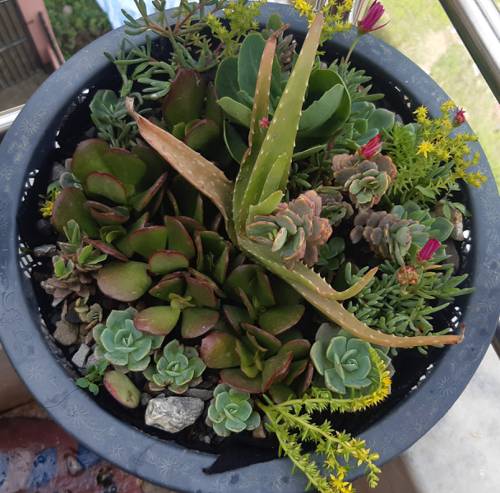
FAQ About Indoor Plant Sleep and Circadian Rhythms

Do indoor plants really have sleep patterns?
Yes, indoor plants do exhibit sleep patterns that are part of their circadian rhythms. These rhythms are biological processes in plants that follow a 24-hour cycle, responding mainly to light and darkness in their environment. At night, you may notice that some plants close their leaves or flowers, which indicates they are entering a rest phase.

What are circadian rhythms in indoor plants?
Circadian rhythms in indoor plants are internal processes that regulate their daily cycles of activity and rest, in response to the light-dark environment. These rhythms influence various functions such as photosynthesis, growth, and oxygen release, aligning these processes with day and night for optimal efficiency.

How do light exposure and circadian rhythms affect indoor plant growth?
Light exposure is crucial for the regulation of circadian rhythms in indoor plants, as it influences photosynthesis and growth hormones. Proper timing and duration of light exposure help synchronize these rhythms, maximizing growth and health. Ideally, plants need a balanced light-dark cycle to mimic natural daylight exposure.

What happens to indoor plants during their "sleep" phase?
During their "sleep" phase, indoor plants reduce metabolic activities like photosynthesis and open their stomata less at night, conserving water. Some plants may also close their leaves or flowers, a behavior known as nyctinasty, which helps minimize water loss and protect sensitive tissues.

Can altering light exposure disrupt a plant's circadian rhythm?
Yes, altering light exposure can disrupt an indoor plant's circadian rhythm. Consistent light patterns are key for maintaining optimal growth and health. Sudden changes in lighting, such as prolonged exposure or irregular timing, can stress plants, leading to issues like poor growth or reduced resistance to diseases.

Do all indoor plants have the same circadian rhythm?
No, not all indoor plants have the same circadian rhythm. Different species have varying light and dark period requirements based on their native habitats. Some plants may need more light during the day, while others thrive with shorter daylight exposure. Understanding a plant’s specific needs is essential for proper care.

How can I ensure my indoor plants follow a healthy circadian rhythm?
To ensure your indoor plants maintain a healthy circadian rhythm, provide consistent light exposure by using timers for artificial lights or placing plants where they get natural sunlight. Avoid sudden changes to lighting conditions, and allow a regular pattern of light and dark periods to mimic natural day-night cycles.

What are some signs that an indoor plant’s circadian rhythm is disrupted?
Signs of a disrupted circadian rhythm in indoor plants include wilting, leaf drop, stunted growth, and uncharacteristic opening or closing of leaves. Inconsistent flowering cycles may also indicate a problem. These symptoms suggest the plant is stressed due to irregular light exposure or an imbalanced day-night cycle.

Is artificial light as effective as natural light for plant circadian rhythms?
Artificial light can effectively support plant circadian rhythms if it mimics the natural light spectrum and timing. However, natural sunlight remains the best option, providing the full spectrum of light that plants need. When using artificial lights, ensure they are of the correct intensity and duration to simulate natural daylight.

Why do some plants sleep with their leaves closed?
Some plants close their leaves during their sleep phase as a part of a protective mechanism called nyctinasty. This behavior helps to reduce water loss and protect their leaves from potential damage. It also positions the leaves to capture the first light of dawn efficiently, optimizing photosynthesis processes.

How do circadian rhythms benefit indoor plants?
Circadian rhythms help indoor plants optimize their physiological activities by aligning them with the natural day-night cycle. This synchronization ensures that processes like photosynthesis, nutrient uptake, and energy conservation occur at the most appropriate times, enhancing growth and health.

Can indoor plants adapt their circadian rhythms if they are moved to a new location?
Indoor plants can adapt their circadian rhythms when moved to a new location, although the adaptation process may require some time. A transition period is necessary to adjust to the new light conditions and establish a new rhythm, so gradual changes in location are preferable to sudden ones.

Are there any indoor plants particularly sensitive to light changes?
Some indoor plants, such as peace lilies and ferns, are more sensitive to light changes. These plants may show immediate signs of stress such as leaf browning or wilting if exposed to sudden changes in light intensity or duration. Careful management of light exposure is crucial for such sensitive species.

When is the best time to water indoor plants considering their circadian rhythms?
The best time to water indoor plants is generally in the morning. Watering at this time aligns with their active phase, allowing plants to efficiently uptake water and nutrients during the day when metabolic processes like photosynthesis are at their peak. Avoid watering late in the evening when plants are less active.

Do changes in seasons affect indoor plants' circadian rhythms?
Yes, changes in seasons can affect indoor plants’ circadian rhythms, often due to variations in natural light intensity and duration. During winter, less natural light may slow a plant’s growth cycle, while longer daylight hours in summer can accelerate growth. Adjusting artificial lighting can help mitigate these effects.

What should I do if my indoor plant seems out of sync with its circadian rhythm?
If your indoor plant seems out of sync with its circadian rhythm, try to establish a consistent light-dark cycle by adjusting exposure to natural or artificial light. Use timers for lighting and ensure the plant receives adequate but consistent light levels. Making gradual changes rather than abrupt adjustments can help restore balance.

How important is the darkness period for indoor plant circadian rhythms?
The darkness period is very important for indoor plant circadian rhythms, as it helps regulate functions like respiration and energy conservation. Extended periods without darkness can disrupt these processes, leading to stress and decreased health. Providing a defined dark period each day is essential for maintaining a plant's natural rhythm.

Can I use timers to help manage my plant's circadian rhythm?
Yes, using timers can be very effective in managing your plant's circadian rhythm, especially for those relying on artificial lighting. Timers ensure that plants receive consistent light and dark periods, mirroring the natural environment more closely, which helps maintain healthy biological cycles.

What role do temperature changes play in indoor plants’ circadian rhythms?
Temperature changes can also influence indoor plants’ circadian rhythms, as many plants rely on both light and temperature cues to regulate their cycles. Drastic temperature fluctuations might disrupt their biological processes. Maintaining a consistent temperature helps support stable rhythms and overall plant health.

Are there any technological tools to assist in monitoring plant circadian rhythms?
There are technological tools, such as smart plant monitors and apps, that help in tracking and managing indoor plant conditions, including light exposure and temperature. These tools provide insights and alerts, helping optimize care for maintaining ideal circadian rhythms and overall plant health.
